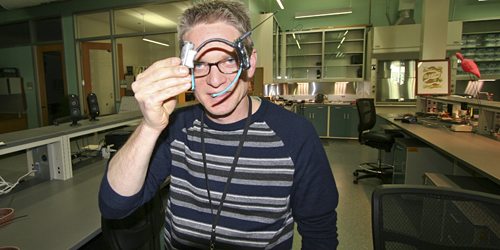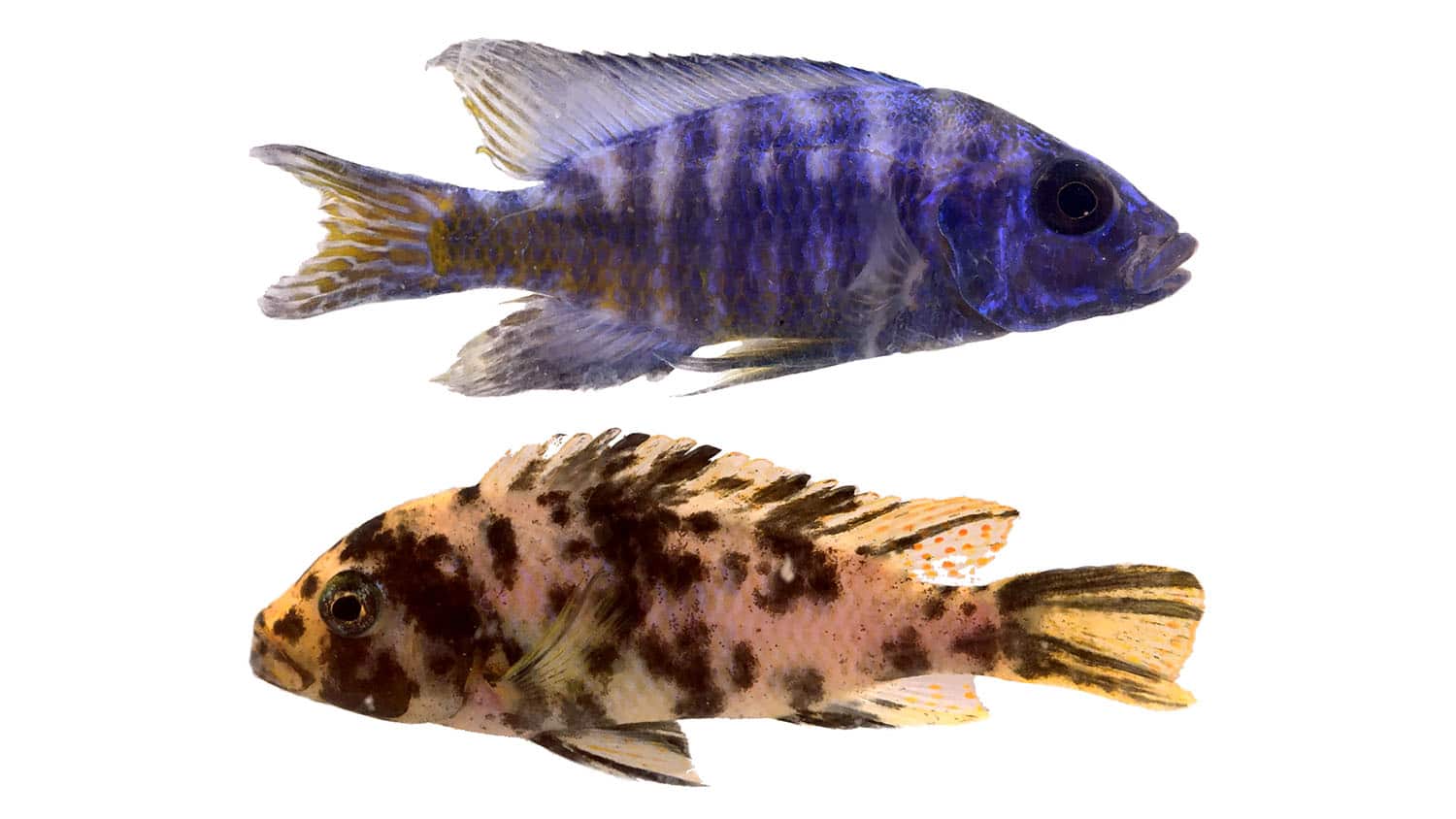Balancing Act

As the new lab director in the N.C. Museum of Natural Science’s new Nature Research Center it is Roland Kays’ job to get people excited about science. As research associate professor in the College of Natural Resources his job is to research wildlife and share his findings with colleagues and students. Impressively, he excels at both.
“I love doing the science, running through the woods and making discoveries while also having places to share those discoveries with people,” Kays says. “I love the whole package.”

Kays joined NC State and the NRC’s Biodiversity and Earth Observation Lab this summer after working as curator of mammalogy in the New York State Museum. He splits his time between the college and the NRC’s lab which is fabulous. Insect specimens line the shelves. A fellow scientist examines plant hoppers and blowflies under a microscope and a flesh-eating beetle colony on display cleans an animal skull.
“Isn’t this great?” he asks.
Tracking Baboons
Kays studies animal movement and has several projects on the go. This year he monitored the movements of a baboon troop in Kenya using GPS-tracking collars. He hopes this data will help research the movement of leadership in social networks.
“With baboons, social networking is a huge component of their development,” he says.
In August he began a citizen’s-science project monitoring mammal populations called eMammal. Over 60 volunteers have laid camera traps in woodland areas and are collecting footage of wildlife while humans aren’t around. A TV screen displays the footage so passers-by at the museum can see. Some segments are uneventful — a squirrel wandering by and the occasional bird — then suddenly we see a fox chasing an opossum.
“With hundreds of cameras out there, you accumulate interesting stuff,” Kays says.

Kays plans to add the data to the Smithsonian Wild’s e-mammal website but also wants to help people form a stronger connection with animals. Volunteers report having walked through forests for years, oblivious to the animal activity they later recorded with their camera trap, he says.
The research might also reveal how hunting and hiking impacts wildlife. Early data already shows female deer avoid the trails more than males. And in non-hunted areas male deer are bigger. Many feature nine-point antlers compared to deer with four-point antlers in hunted areas.
“The difference is huge,” he says.
Early Start
As a boy growing up in suburban Michigan, Kays knew his fascination with the woods, fishing and wildlife would probably translate into a research career. His family works in science and theater, a gift shared by Kays as well. He is dynamic on video, unfazed when speaking publicly about his work, often before hundreds of teenagers at the museum’s Daily Planet Theater, and next fall Kays looks forward to teaching CNR students in his mammalogy class.
He says the best part is working where science is embraced and promoted, especially now when science is becoming so popular.
“It takes good combinations of science, education and technology to attract people to science and NC State is such a big part of that,” Kays says. “Having this strong a connection between a museum and university is rare. It’s amazing being part of this.”
- Categories:


